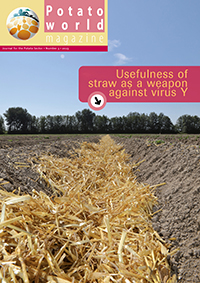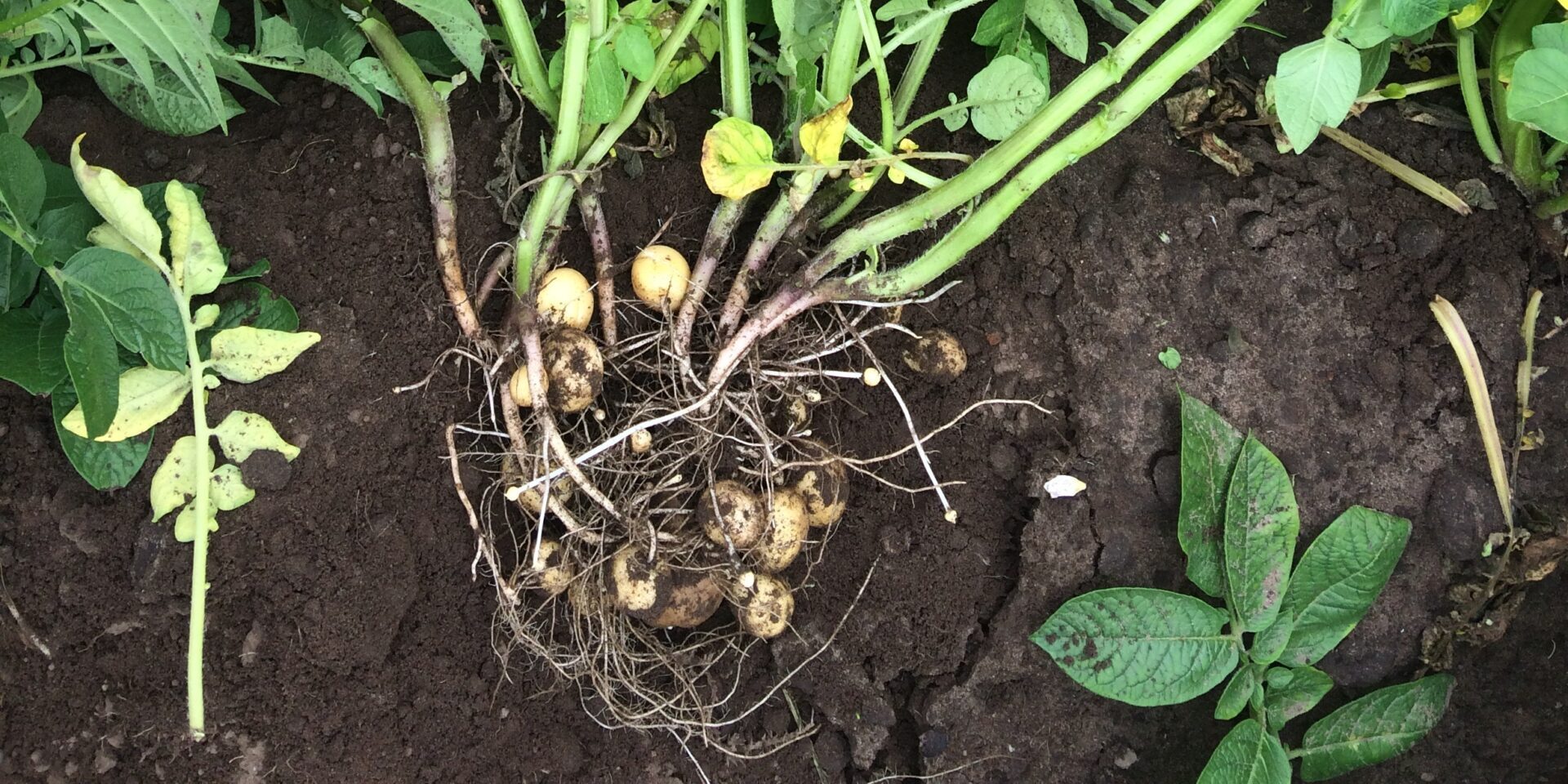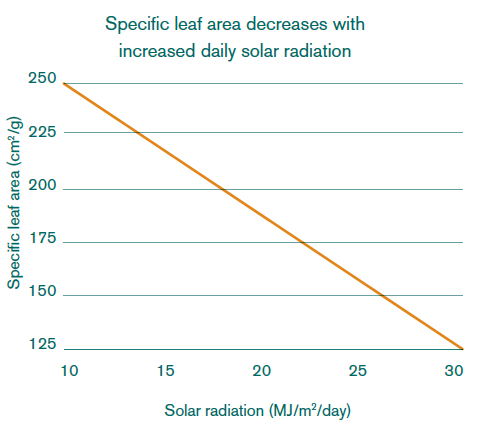Already a subscriber? Activate your premium account

Potatoworld Magazine

The objective of growing potato is intercepting solar radiation as much as possible during the cycle from planting until crop end (foliage death). Radiation does not affect development through partitioning of dry matter, but affects the accumulation of crop dry matter, crop growth.

There is, however, an effect of solar radiation on leaf morphology. When grown under high levels of insolation, the leaves are thicker (and so have a lower specific leaf area, SLA, value) as is evident from the measurement of the SLA expressed as cm2 of leaf produced per g of leaf dry matter. This varies from 300 cm2/g in an environment with low radiation such as in winter in West Bengal with daily radiation of about 12 MJ/m2 day compared to 200 cm2/g in the Andean highlands with around 24 MJ/m2/day.
Solar radiation is divided into three types. The short waves are below 400 nanometer (nm) wavelength and contain ultra-violet radiation. The photosynthetically active radiation is between 400 and 700 nm, which also happens to be the visible light as we see it. The blue shortwaves and far-red long waves are invisible. Finally there are the long heat-producing waves above 700 nm. Of all solar radiation, only 50 percent is photosynthetically active. Of that, 30 percent is lost as it never reaches the chlorophyll in the chloroplast and a quarter of it is lost because short wavelengths are altered to longer waves producing heat. Converting the remaining solar energy into glucose only has a 30 percent efficiency. When finally sugars are formed, 35 percent of the sugars are lost in respiration and do not contribute to the structural mass of the potato plant.
As these rounded figures show, capturing the sun through photosynthesis is not an efficient system. Even when a photon of light has exited chlorophyll to a higher energy state, it may fall back to the lower state, thus releasing a photon and radiation that can be measured: chlorophyll fluorescence. Fluorescence is more manifest when the plant is under sub-optimal conditions such as extremely high or low temperatures, drought, heat and lack of nitrogen. The strongest effects are seen when treated with herbicides as in the case with chemical haulm killing.
Events
©2015 - 2024 Potatoworld | Webdesign and realisation COMMPRO